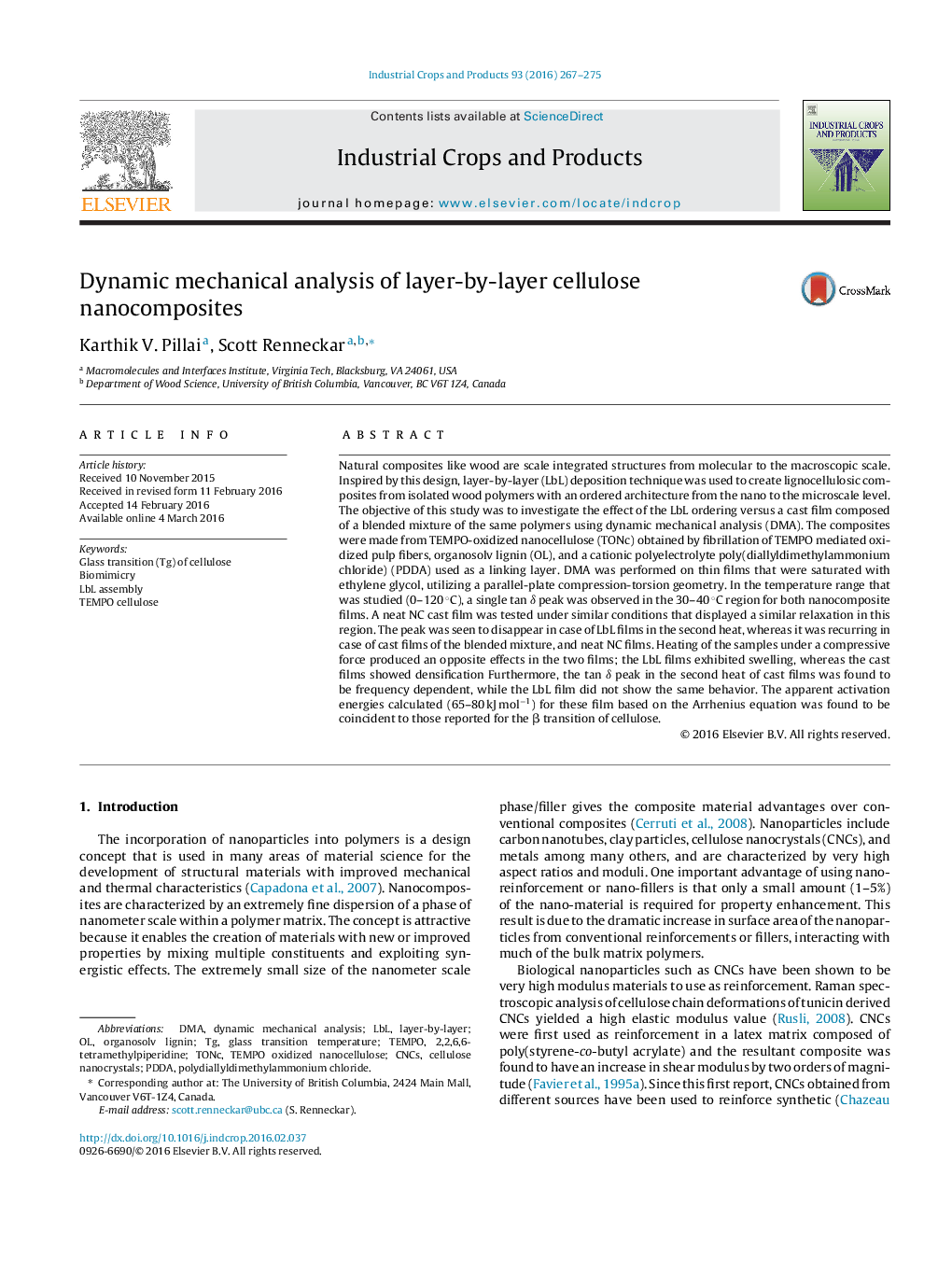| Article ID | Journal | Published Year | Pages | File Type |
|---|---|---|---|---|
| 4512077 | Industrial Crops and Products | 2016 | 9 Pages |
•Nanocellulose-lignin films mimicking lamellar organization in cell wall.•Secondary transition of nanocellulose films revealed in plasticized composite.•Film composition and organization of polymers impacts reversible transition of composites.
Natural composites like wood are scale integrated structures from molecular to the macroscopic scale. Inspired by this design, layer-by-layer (LbL) deposition technique was used to create lignocellulosic composites from isolated wood polymers with an ordered architecture from the nano to the microscale level. The objective of this study was to investigate the effect of the LbL ordering versus a cast film composed of a blended mixture of the same polymers using dynamic mechanical analysis (DMA). The composites were made from TEMPO-oxidized nanocellulose (TONc) obtained by fibrillation of TEMPO mediated oxidized pulp fibers, organosolv lignin (OL), and a cationic polyelectrolyte poly(diallyldimethylammonium chloride) (PDDA) used as a linking layer. DMA was performed on thin films that were saturated with ethylene glycol, utilizing a parallel-plate compression-torsion geometry. In the temperature range that was studied (0–120 °C), a single tan δ peak was observed in the 30–40 °C region for both nanocomposite films. A neat NC cast film was tested under similar conditions that displayed a similar relaxation in this region. The peak was seen to disappear in case of LbL films in the second heat, whereas it was recurring in case of cast films of the blended mixture, and neat NC films. Heating of the samples under a compressive force produced an opposite effects in the two films; the LbL films exhibited swelling, whereas the cast films showed densification Furthermore, the tan δ peak in the second heat of cast films was found to be frequency dependent, while the LbL film did not show the same behavior. The apparent activation energies calculated (65–80 kJ mol−1) for these film based on the Arrhenius equation was found to be coincident to those reported for the β transition of cellulose.
